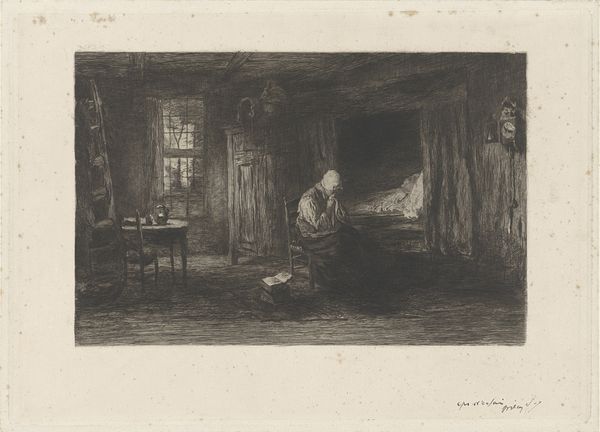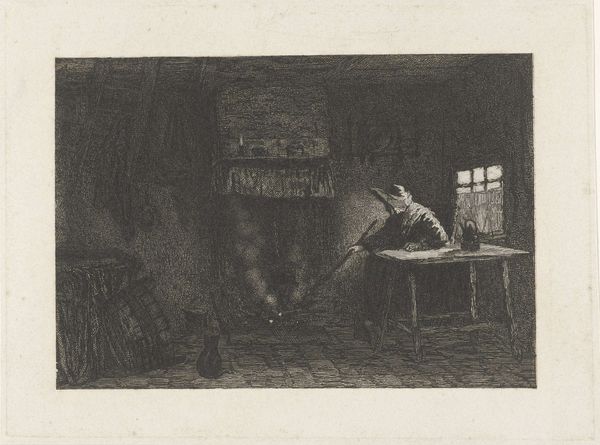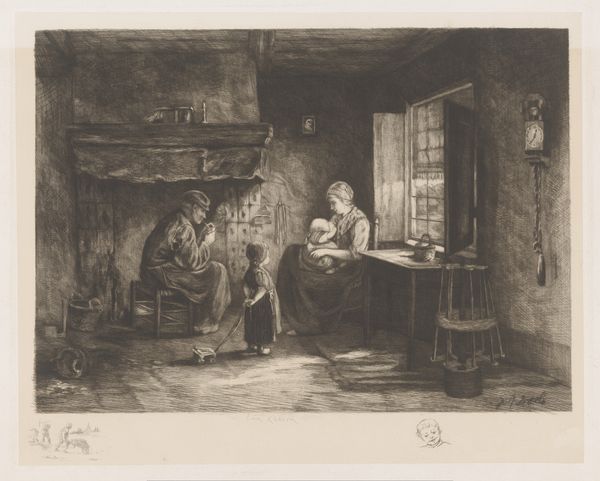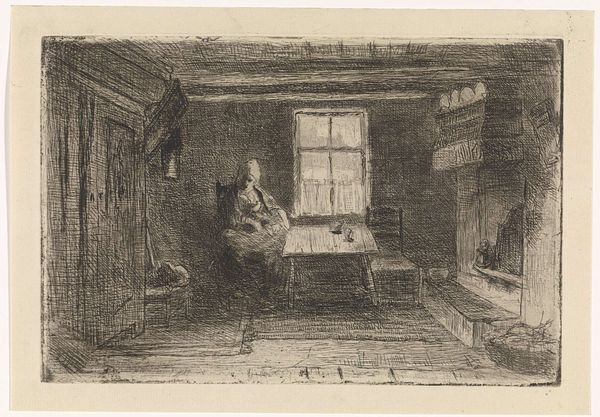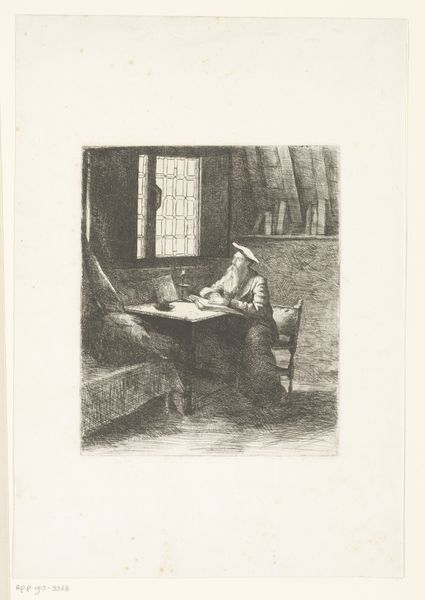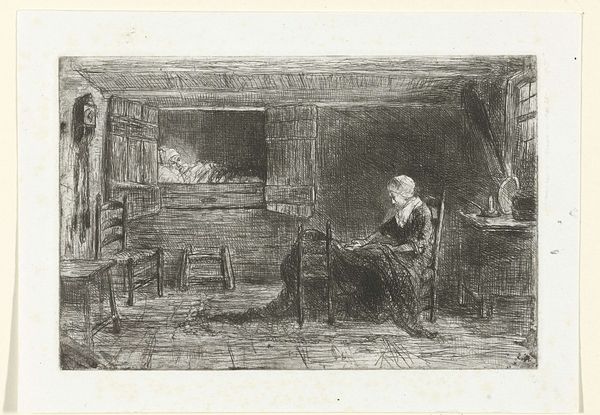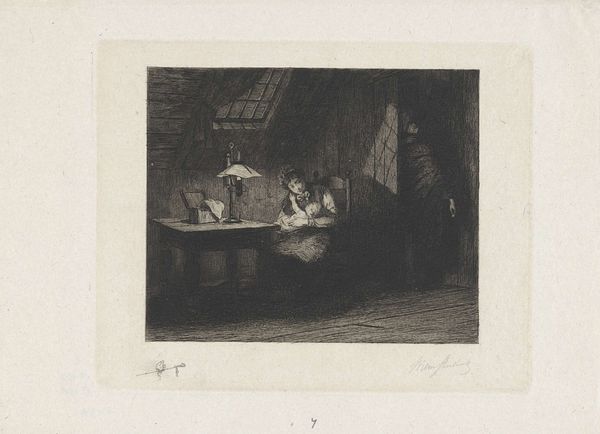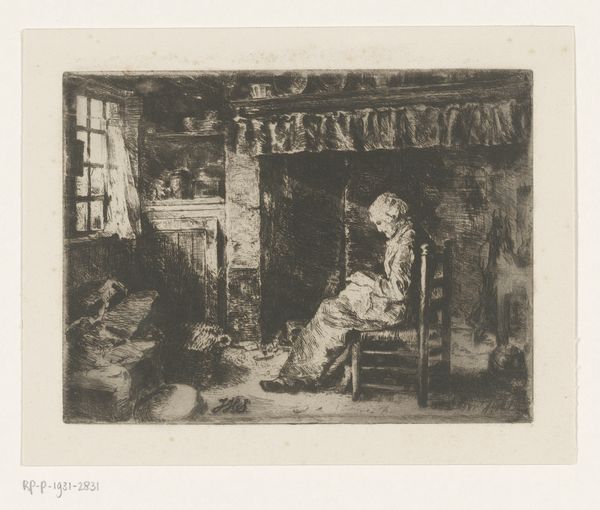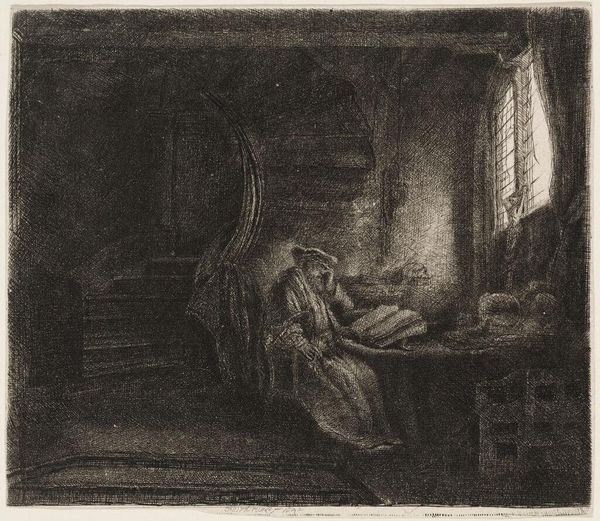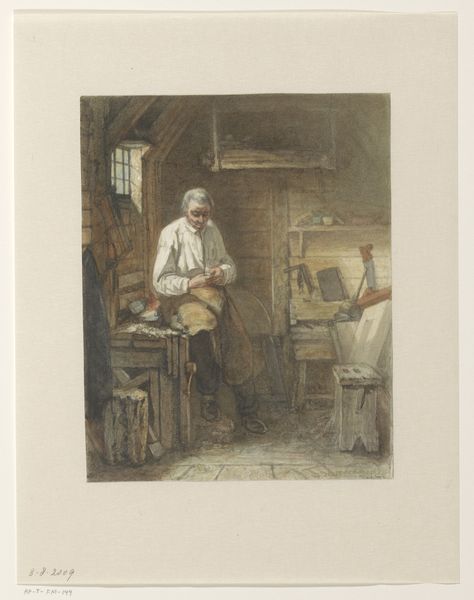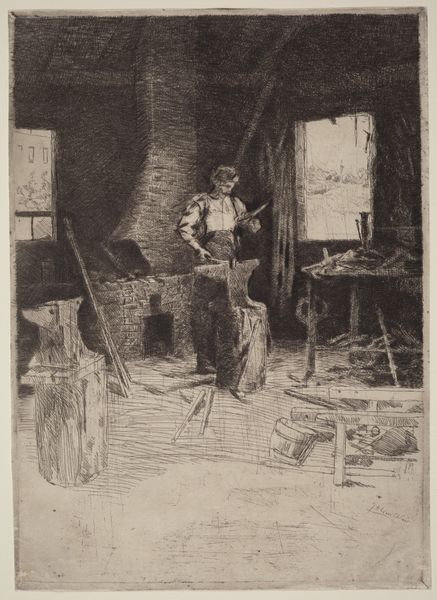
print, etching
#
portrait
#
dutch-golden-age
# print
#
etching
#
landscape
#
line
#
genre-painting
#
realism
Dimensions: height 122 mm, width 157 mm
Copyright: Rijks Museum: Open Domain
Curator: Today we’re looking at “Vrouw met slapend kind in een boereninterieur,” or "Woman with Sleeping Child in a Peasant Interior," an etching by Philip Zilcken, made in 1888. It resides here at the Rijksmuseum. Editor: It feels like a breath held… a tender moment caught between fatigue and quiet duty. It’s rendered in a really subtle monochrome, the sort that lets all the tonal values sing. Curator: Absolutely. Zilcken's mastery of the etching technique is what allows those tonal values to emerge. You see how he employs dense, complex line work to describe the texture of the worn wood and fabric? That meticulous craft, that labor, really grounds us in the reality of the interior space. Editor: It reminds me of trying to sketch from memory. All those lines, piling up, to try and conjure something felt more than seen. I wonder if that table, cluttered with domestic tools, was a conscious decision by Zilcken. It suggests the relentless cycle of labor that defined the lives of many women during that period. It doesn’t offer simple comfort, it's true. The domestic scene almost threatens to collapse around them with all its angular lines and shadowy corners. Curator: Exactly, Zilcken wasn't romanticizing peasant life, but portraying its reality. I mean, it is quite realist in its focus. And those details -- the specific tools and items –speak to a larger narrative of production, consumption, and the economy of rural households. This challenges idealized views prevalent in art during that era. It highlights women’s labor both in the home and contributing to production, whether spinning, sewing, weaving or any one of a thousand repetitive domestic tasks. Editor: You can almost feel the chill of the room. That bare window hints at a cold landscape just beyond. You wonder, as the viewer, how the light and shade also suggests the mental burden that woman would have carried day in, day out. Did she know, sitting there, she would one day be memorialized as a symbol, not just a person? It’s heavy and beautifully subtle, at the same time. Curator: Ultimately, Zilcken's meticulous rendering gives us a valuable record, one which provokes critical inquiry into representations of labor and lived experience. Editor: Indeed, a simple etching can open so many windows onto broader questions.
Comments
No comments
Be the first to comment and join the conversation on the ultimate creative platform.
